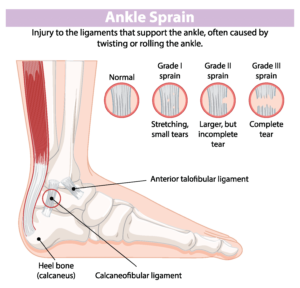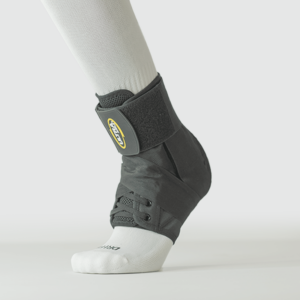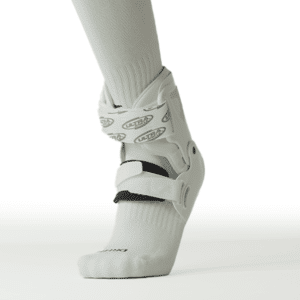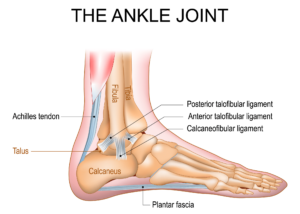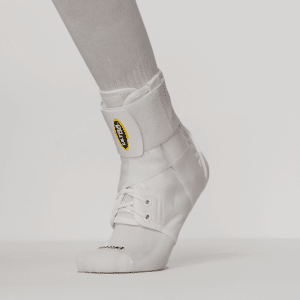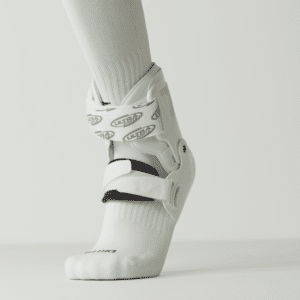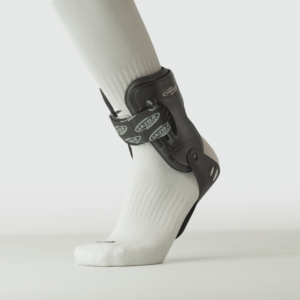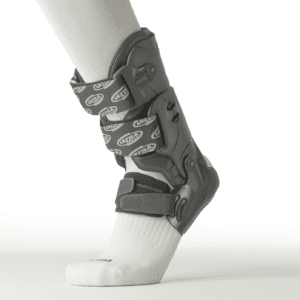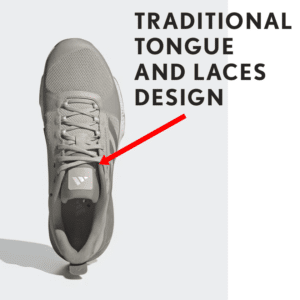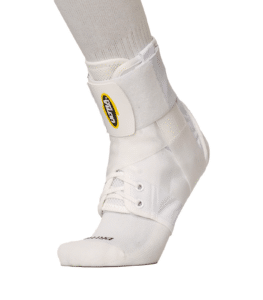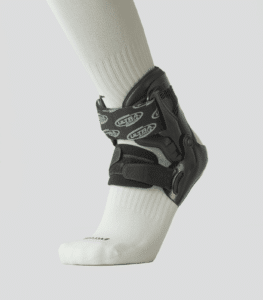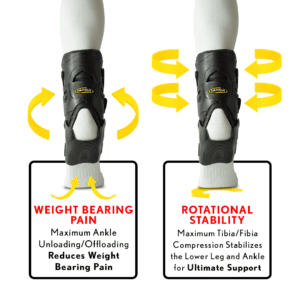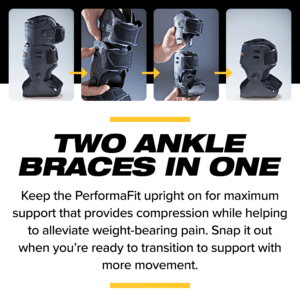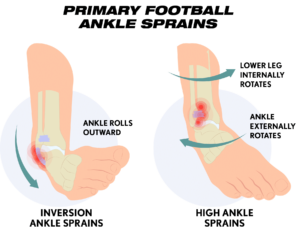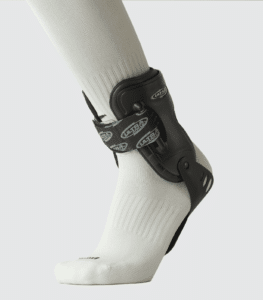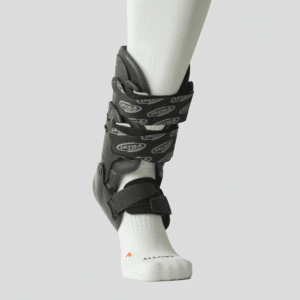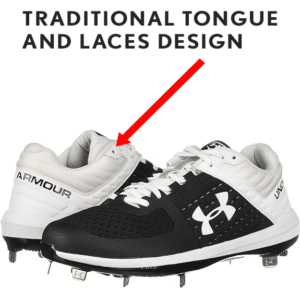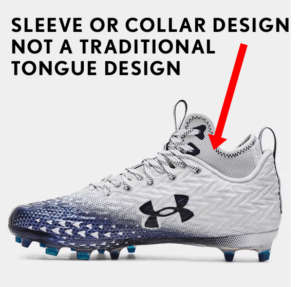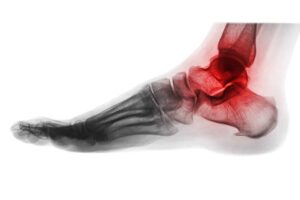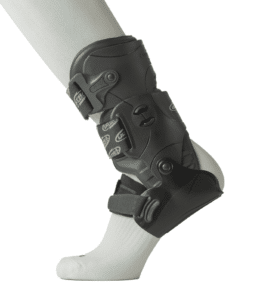New to Club Volleyball? Should your athlete wear ankle braces?
Introduction
You just attended your first big club volleyball tournament and were overwhelmed with the spectacle of it all. It’s a jolt to the senses the first time you enter the facility and there are volleyball courts as far as the eye can see. You have entered the big league of club volleyball. From now on, play is more intense and aggressive, and ankle injuries are more prevalent and severe. Should your athlete wear an ankle brace to play club volleyball?
In this article, we’ll explore why ankle injuries happen so frequently in volleyball, how braces help, and why they’re a better option than traditional taping. By the end, you’ll have a clear understanding of ankle injuries and what to do about them.
Why Are Ankle Injuries Common in Volleyball?
Volleyball is a high-intensity sport that requires quick lateral movements, explosive jumps, and sudden changes in direction. While these dynamic movements make the game exciting, they also put a lot of stress on the ankles, making ankle sprains the most common injury among volleyball players.
The biggest culprit? Landing on another player’s foot. Since volleyball is played on a shared court with teammates and opponents often near the net, it’s easy for players to come down awkwardly after a jump. When this happens, the ankle can roll inward or outward, stretching or even tearing ligaments, causing a grade 1 ankle sprain up to a grade 3 ankle sprain.
Other factors that contribute to ankle injuries in club volleyball include:
- Frequent jumping and landing – The repetitive stress on the ankles increases the risk of instability and fatigue.
- Quick lateral movements – Defensive plays and sudden changes in direction can put extra strain on the ankle ligaments.
- Young athletes still developing strength and coordination – Club volleyball players, especially beginners, may not have the same stability and muscle control as older athletes, making them more vulnerable to injuries.
Because of these risks, ankle protection is crucial for young players. The good news is that ankle braces provide an effective way to reduce these risks and keep players safe on the court.
How Do Ankle Braces Help Prevent Injuries?
Ankle braces are one of the most effective ways to prevent sprains and keep volleyball players healthy throughout the season. By providing stability and support, they help reduce the risk of excessive ankle movement that can lead to injury.
Here’s how ankle braces work to protect young athletes:
✅ Limits dangerous rolling motions – Braces help prevent the ankle from turning too far inward or outward, which is the main cause of sprains.
✅ Provides external support – An ankle brace reinforces the ligaments and tendons, reducing strain and trauma to the ankle.
✅ Reduces the severity of injuries – Even if an athlete rolls their ankle while wearing a brace, the injury is often less severe and heals faster compared to an unprotected ankle.
✅ Confidence booster – Players who have previously suffered an ankle sprain may feel more secure wearing a brace, allowing them to move freely without fear of reinjury.
Since club volleyball players are constantly jumping, landing, and making quick lateral moves, wearing ankle braces can be the difference between having fun and staying in the game or constantly managing reoccurring ankle injuries.
Braces vs. Taping: What’s the Better Option?
When it comes to ankle injury prevention, many parents and coaches debate whether ankle braces or taping is the better choice. While both provide support, braces offer several advantages that make them the more effective and convenient option for club volleyball players.
🔹 Consistency & Effectiveness
- Taping stretches out during play, losing its supportive effect over time.
- Ankle braces can protect your ankles more consistently than tape because they stay supportive longer than tape providing more long-lasting ankle protection.
🔹 Convenience & Cost
- Taping must be applied by a trainer or coach before every game or practice, taking up time and resources.
- Ankle braces are easy to put on and don’t require professional assistance.
- Braces are more cost-effective in the long run—lace-up ankle braces, like our Ultra 360, can last an entire season, whereas tape needs constant replenishing. Looking for more durability? Our Ultra Zoom ankle braces can last up to 3 full seasons of volleyball.
🔹 Adjustability & Comfort
- Once tape is applied, it can’t be adjusted during play.
- Braces allow players to customize their fit and make adjustments as needed, before and during a match.
Because of these benefits, most volleyball players at the club, college, and professional levels choose ankle braces over taping for reliable, long-term protection.
What to Look for When Choosing an Ankle Brace
Not all ankle braces are created equal. When choosing the right brace for your young volleyball player, it’s important to look for a balance of support, comfort, and durability. Here are the key factors to consider:
🔹 Lightweight & Durable Materials
- A good ankle brace should be made from high-quality, lightweight materials that provide support without feeling bulky.
- Durability is key—look for braces designed to withstand the constant jumping and movement in volleyball.
🔹 Hinged vs. Lace-Up Designs
- Hinged ankle braces allow natural movement while still protecting against excessive rolling.
- Lace-up braces can be more restrictive and may loosen over time.
🔹 Adjustable Fit & Comfort
- The brace should fit snugly but comfortably inside the volleyball shoe.
- Some braces offer adjustable straps to customize the level of support.
🔹 Proven Effectiveness in Volleyball
- Not all ankle braces are designed for the specific demands of volleyball.
- Brands like Ultra Ankle® specialize in braces tailored for volleyball players, ensuring the right combination of protection and mobility.
Investing in the right ankle brace can make a huge difference in injury prevention, allowing your athlete to play confidently and stay on the court longer.
How do I determine if my child needs to wear ankle braces.
Does your child play on the net or in the back row? Players at the net are much more likely to injure their ankle by landing on an opposing player’s foot and turning their ankle.
If your child has a previous ankle injury, they are much more likely to have another ankle injury playing volleyball.
Young players new to the game with minimal to no previous ankle injury history can do well with our Ultra 360® entry level ankle brace.
Older players with 2 or more previous ankle injuries will need a higher level of ankle protection found in our Ultra Zoom® ankle brace.
Conclusion
As a parent of a club volleyball player, ensuring your child’s safety on the court is a top priority. With ankle sprains being the most common injury in volleyball, taking proactive steps to prevent them is crucial. Ankle braces provide a simple, effective way to reduce injury risk, offer consistent support, and give players the confidence to perform at their best.
Compared to traditional taping, ankle braces are more reliable, cost-effective, and easier to use, making them the preferred choice for athletes at all levels. And with modern designs that allow for full range of motion, players can jump, pivot, and move freely without restriction.
By investing in a high-quality ankle brace—like those designed specifically for volleyball by Ultra Ankle®—you’re helping your young athlete stay healthy, strong, and ready to compete all season long.
